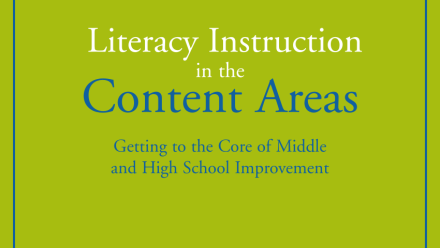Secondary teachers are asked to balance teaching required content while developing complex and sometimes foundational literacy skills for 50-100+ students a day. As you know, it’s a daunting task that history, science, math, foreign language teachers and others strive to accomplish in every class they teach. Does this make all content teachers reading teachers? Let’s see what you think by the end of this module.
Calling All Content Area Teachers
Should you focus more on general reading strategies such as making predictions, summarizing, and inferencing or is your instructional time better spent on the reading and writing practices you use within your specific content area or discipline? The answer depends on many variables. Let’s consider a few of them up close.
1. What are the needs of your students? How do they differ across the classes you teach? Students often have varying mastery levels of general or discipline-specific reading and writing strategies depending on previous instruction and opportunities to apply those strategies while reading and writing.
2. How well versed are you in teaching general or discipline-specific reading and writing strategies? If you answered, “not very” then you are not alone. Although teacher certification requirements have evolved, there are still very few states that require more than a token amount of training or coursework in literacy instruction for secondary education licensure. It should come as no surprise then that secondary teachers often regard themselves as teachers of subject areas instead of reading and writing. Even English teachers — whom colleagues often incorrectly assume to be responsible for reading and writing instruction — tend to define themselves first and foremost as teachers of literature.
3. Do you have time to adequately plan your instruction and collaborate with content and grade level teams to develop approaches to integrating reading and writing practices into your content instruction? If our communal goal is to build students’ advanced literacy skills — the ability to understand and analyze a variety of texts and to write and communicate persuasively — to succeed in life after high school, then we need to think creatively about how we are going to support students’ literacy growth. As the old adage says, “It takes a village” and the village needs time to meet and work collaboratively.
Related Resources
Policy, Legislation & Initiatives
Literacy Instruction in the Content Areas: Getting to the Core of Middle and High School Improvement
Content-Area Literacy



